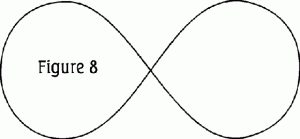In only a few months or years, it will be possible to have an eye surgeon perform eye color change surgery to receive beautiful blue eyes.
You know how compelling and attractive blue eyes are, and many of us wish we had such a beautiful eye color….. You may not have to wait much longer to make this dream come true: Scientists are in the last stages of research and clinical trials to make this reality.
Eye Color Change Surgery Possible Soon:

Getting great looking blue eyes is the wish of many – Soon possible?
Until now it was only possible to change the color of your eyes with colored lenses. And with colored lenses come all the disadvantages of wearing contacts like the possiblity to lose them, potential eye irritation and heaps of other disadvantages. With the prospective eye color change surgery, you go for a short, non-invasive procedure at your ophtalmo and bang! Your eyes are permanently blue.
The only advantage of the contacts in comparison to an eye color change surgery is, that you can take the lenses out and you have your original eye color back. With eye color change surgery, the change is permanent and can not be reversed. So if you decide you want blue eyes and have the procedure, make sure it’s really what you want!
Eye Color Change Surgery For Blue Eyes
With eye color change surgery it is only possible to change the color to blue. That’s because we basically all have blue eyes. It’s only a very thin top layer in our iris (the colored part of the eye) that covers the blue basic color. When you have i.e. brown eyes, it’s a thin brown pigment layer on top of the iris that makes for your eye color.
Stroma Laser For Eye Color Change Surgery
Here’s how an eye color change surgery shall work. The information is still somewhat imprecise, as the final procedure is not yet approved by the FDA and still in development.
A patient’s eye will be treated with a so called Stroma laser. This laser will be pointed at only the very thin layer of pigment covering the underlying blue color. Over a period of a few weeks, the body will then start to remove the destroyed brown color cells and over time the underlying blue color will appear. Initially the eyes will become darker, before the lighter blue color will appear.
Eye Color Change Surgey by Stroma Medical – Videos
Watch the three videos below to find out how eye color change surgery will work and who this new company is. These videos also talk about fund raising for a start-up company, but the information about the new procedure flows into the conversation at all stages, and you will find out who the people behind the company are. Worthwhile watching!:
Even though it’s not immediately available, looks as if the eye color change surgery is only around the corner, these people seem to have their act pretty much together!
There are other means than colored contact lenses that are also not yet approved in the USA but seem to be used in other countries to change the color of the eyes: Cosmetic iris implants (medically indicated iris implants are apporved, as they can help people who have eye injury or birth defects to have a normal look). In this procedure a different color artificial iris is implanted with a surgical procedure into the eye. That seems to be quite risky, and different studies have pointede out the risks of iris implant procedures, which can be blindness, glaucoma, scarring of the cornea, sensitivity to light or the development of cataracts.
In comparison, the Stroma laser surgery seems to be less invasive but nevertheless: Doing eye color change surgery only for cosmetic reasons still bears risks – consider if you want to risk going blind at worst, before you decide to have eye color change surgery for nice blue eyes….

 After a consultation, never feel that you are obligated to use that surgeon and have him perform eye surgery on your eyes . You are completely free to talk to other surgeons as well. And don’t feel that you are offending anyone. It has long been an accepted practice to seek a second opinion before eye surgery, and most doctors would even urge their patients to do so.
After a consultation, never feel that you are obligated to use that surgeon and have him perform eye surgery on your eyes . You are completely free to talk to other surgeons as well. And don’t feel that you are offending anyone. It has long been an accepted practice to seek a second opinion before eye surgery, and most doctors would even urge their patients to do so.